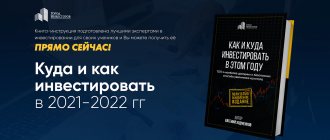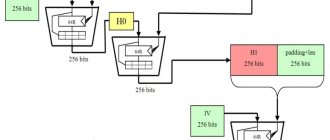Hedge fund
Today's investment sphere is replete with tools for generating income for every taste. Unfortunately, not all of them are equally accessible to different categories of investors. This is especially true for highly profitable types of alternative investments.
First of all, we are talking about hedge funds, which allow passive income to be received only by those who can overcome the minimum limit on the volume of invested funds, often measured in millions of dollars.
What are hedge funds, who most often uses their services, how a high percentage of profitability is achieved and why they are almost non-existent on the domestic market - you can learn about all this and more as you read this article.
- What is a hedge fund
- How does a hedge fund work?
- Classification of hedge funds
- How to create a hedge fund
- Hedge funds in Russia
- The largest hedge funds in the world
What is a hedge fund
What is a hedge fund
Hedge fund
is a type of private investment fund in which the pool of investments of participants is managed by a general partner, while adhering to tactics of maximizing profits while minimizing risks.
As a rule, such organizations are limited liability partnerships, which are weakly subject to legislative regulation and restrictions in terms of the choice of financial instruments and management methods. This means that most often managers can, at their own discretion, apply any investment and asset trading strategies, including with any leverage.
Participation in hedge funds is not available
to a wide range of people. In many countries, this opportunity is available only to qualified investors, in particular institutional ones. In addition, there are usually restrictions on the size of the initial investment contribution.
For example, in the USA, the minimum entry threshold for private investors is $5 million, and for institutions - $25 million. But in popular offshore zones you can find funds that take on management from $100,000.
The first hedge fund was created in 1949 by American sociologist A.W. Jones, who came up with the idea of managing other people's investments using a strategy that was unique at that time. His method was to reduce investment risks by simultaneously opening equal trades long on stocks that were potentially expected to rise in price, and short on assets that were prone to fall in price.
Actually, this was the principle of risk hedging, from which hedge funds got their name.
☝️
The very concept of “hedge” comes from the English “hedge” - “fence”, and can literally be interpreted as “to protect against losses”.
A visual explanation of what a hedge fund is can be seen in the video below:
What is a hedge fund
Rating of American companies
Other major US hedge funds include:
- Millenium Partners LP, which has $180 billion under management and is known for its combination of strategies.
- Citadel Global Fixed Income Master Fund Ltd., which uses instruments that provide fixed income.
- Black River Firv Opportunity Master Fund Ltd., which is known for its participation in the supply of food, agricultural products, as well as industrial and financial performance in many countries.
- Bluecrest Capital International Master Fund Limited, which has investments in the stock and debt markets of America and the UK.
- Adage Capital Partners LP, headquartered in Boston, specializes in stock trading and bases its strategy on careful analysis of current stock prices.
How does a hedge fund work?
The principle of operation of hedge funds
In any hedge fund there are investors whose assets form the investment capital, and a private or legal entity that takes over its management - the main partner (manager).
For his services, the latter receives a remuneration, the amount and calculation formula of which is established directly by the agreement concluded with investors.
☝️
There are no clear boundaries. This could be 1–2% of the initial cost of investment assets or 15–20% of the resulting profit.
It is also common to charge several types of commissions at once, for example, an asset management fee and a share of income.
After receiving investor funds, the hedge fund manager can independently choose which assets to invest in (stocks, currencies, bonds, real estate, derivatives, etc.) and which instruments to use (direct purchase/sale, futures, margin trading, etc.). d.).
Management of depositors' funds
In order to better understand the work of such institutions, consider an example of the activity of the fictitious hedge fund Invest2020 over a 12-month period.
So, to begin with, under the terms of the operating agreement, the managing partner can invest in whatever he wants, and he is entitled to a 20% commission on 90% of the fund's annual profits. The remaining 10% of income is distributed exclusively among investors - these funds are the threshold return that the manager must exceed before starting to earn his commission.
Let’s assume that at the beginning of the year 15 investors invested in Invest2020—$20 million each. In total, the hedge fund's assets amounted to $300 million. After signing an agreement with all participants and transferring their funds to the fund's account, the manager began searching for attractive investment opportunities.
Let's say two options suitable for hedging were found - buying shares of a promising IT company and opening a short transaction (shorts) in the currency of some country that is on the verge of default. The fund's broker was instructed to invest $150 million in each of the transactions.
As a result, a year later both transactions were successful. The startup's shares rose by 40%. And shorting the currency of the country that declared a default brought 80% of the profit. Both deals closed, resulting in $210 million in the first and $270 million in the second. In total, the fund’s capital grew to $480 million, of which the net profit was:
480 – 300 = 180 million ($)
According to the terms of the agreement, 10% ($18 million) of this amount is due to investors. From the remaining 90% ($162 million), the manager’s commission is deducted - 20%:
162 * 0.2 =
32.4 million ($)
After this, the remaining $129.6 million (80%) is distributed among investors. As a result of the annual activity of the Invest2020 hedge fund, they earned a total of:
18 + 129.6 = 147.6 million ($)
Each of the investors received a profit of $9.84 million (147.6/15), which was almost 50% of the initially invested amount (from $20 million).
Renaissance Technologies
Where to track: https://whalewisdom.com/filer/renaissance-technologies-llc
Renaissance Technologies is a hedge fund created in 1982 by a mathematician no less famous than Dalio, mathematician Jim Simons .
The fund manages $130 billion in assets and its founder, former Cold War Soviet codebreaker James Simons, uses mathematical and statistical analysis.
Renaissance works mainly with American and foreign stocks, bonds, futures, forward contracts and even Forex.
Classification of hedge funds
Types of hedge funds
Depending on the method of conducting investment activities
Hedge funds are divided into the following types:
Global
— the managers of these funds make decisions about opening transactions based on forecasting the state of the global economy. They often use derivatives and leverage. In turn, global hedge funds are divided into subtypes:
- international - trade in securities of various countries;
- macro - focused on monitoring interest rates and exchange rates;
- emerging markets - they operate with securities of countries in which financial markets are not sufficiently developed.
Event
— mostly deal with securities of companies that are undergoing merger, reorganization, bankruptcy procedures or are expected to increase their credit ratings. Divided into:
- hedge funds for crisis securities - make transactions with shares of enterprises that are reorganized or go bankrupt;
- risk arbitrage funds - operate with securities of companies that are involved in a merger or are being absorbed by others (the shares of the acquired company become cheaper, and those of the absorbing company become more expensive).
Neutral strategies
- the largest group of hedge funds. Their managers hardly use leverage, and if they do, it’s small. They choose the classic strategy of simultaneously opening equal short and long positions, trying to eliminate risks both in individual market sectors and in relation to the market as a whole.
☝️
You can also separately highlight the so-called funds of funds, which invest their assets in other hedge funds, essentially shifting the responsibility for diversifying their risks onto them.
Another classification of hedge funds is based on the investment strategies they use:
Directed trading
— the emphasis is on forecasting trends in the value of financial assets, including macroeconomic ones (exchange rates, interest rates, etc.). Transactions can be either long-term or short-term, due to the active review of investment portfolios.
Traditional trade
— only long (long) positions are opened in shares of fast-growing and undervalued companies.
Lending
— investing in securities of enterprises in need of an injection of credit funds. Most often, the assets of a hedge fund are invested in debt options to purchase shares of companies at a reduced price.
Relative cost
— purchase or sale of assets in anticipation of arbitrage opportunities, that is, making a profit due to changes in the value of the price spread in a direction favorable to the fund, including under the influence of events occurring with companies.
Asset selection
— searching for overvalued or undervalued securities with the aim of buying/selling them before other market participants discover it.
Multi-strategy
— use by a hedge fund of several strategies from the listed list at once.
Kinds
The IMF classification identifies three types of structures:
- Relative value funds - operating in a specific market segment using classical hedging strategies, relying on the duality of the prices of the underlying asset in the spot and futures markets.
- Macro funds - prefer to invest in the assets of a specific country, based on the forecast of its political and economic development as a whole.
- Global funds play on the markets of all countries based on the investment attractiveness of securities of specific issuers.
How to create a hedge fund
Stages of creating a hedge fund
How to create a hedge fund:
- Decide on the country of registration.
- Find a registrar (optionally, a consulting company).
- Choose a management company or create your own.
- Conclude an agreement with a guarantor bank.
- Hire a lawyer and broker.
- Attract investors.
Next, we will consider each stage in detail with all the nuances.
Before you start creating a hedge fund, you need to decide on the country of its registration.
☝️
If you need a minimum of attention from regulators, a simplified registration process and savings on the maintenance of the fund, choose states from the offshore zone, for example, the Bahamas, Virgin or Cayman Islands.
But if the newly created hedge fund needs to attract the attention of large investors, it is still better to use options that are more complex in terms of registration, but still increase the level of trust - the USA, Great Britain or the European Union.
The process of creating a hedge fund
Having decided on the location of registering a hedge fund, you can proceed directly to the stages of its creation:
- Find a registrar who has experience registering investment funds within the jurisdiction in question. It is best if it is a local consulting company that will help collect the initial package of documents, submit the necessary applications and complete the entire process of registering a hedge fund.
- Choose a management company (manager) or create your own. The second option is more complicated, since it will require collecting additional documents, obtaining a license, hiring specialists, etc. Moreover, this will result in additional costs. It’s easier, of course, to hire an existing company, but it’s worth considering that it will always have to pay a certain percentage of your hedge fund’s profits. In addition, when choosing a third-party manager, you need to make sure of his ability to work with investments according to the strategies that will be used by your fund.
- Conclude an agreement with a bank that will act as a guarantor (custodian). If it is a large and well-known financial institution, investor confidence in your hedge fund will increase.
- Hire a highly qualified lawyer who understands the legal aspects of the jurisdictions in which the hedge fund is registered and in which it will serve clients.
- Find and hire a broker who has the right to operate in all types of markets that your fund needs (securities, currencies, real estate, etc.). Check his reputation and, most importantly, the availability of licenses with the help of your lawyer.
- Attract the first investors, because without them, creating a hedge fund makes no sense. Ideally, you should get a list of people and institutions who are ready to entrust you with managing their money at the preparation and planning stage. But if this has not been done in advance, it is worth hiring marketers and other specialists who can advertise the new hedge fund and find those who decide to use its services.
When all the legal requirements of the fund’s registration jurisdiction have been complied with and all the structure necessary for its functioning has been built, you can begin concluding agreements with investors and then searching for the first potentially profitable assets to open transactions, while not forgetting about hedging risks.
Is it effective?
The Extranet Investment hedge fund, reviews of which are very controversial, is essentially a hype project, and today it is very long-lasting. It has been continuously operating since January 2012. Currently it has several tens of thousands of investors. Reviews about it are different, as already noted.
The key feature of Extranet Investment is the ability to invest small amounts into it. If most hedge funds start working with amounts starting from one hundred thousand dollars, then here you can invest from ten dollars. There is also the opportunity to invite other people to the project and earn additional income from this.
However, it is worth considering the fact that an investment project that has a referral structure always operates on the principle of a financial pyramid. That is, investors receive payments from proceeds from new investors.
Representatives of Extranet Investment made an official statement that the company is making a great contribution to agriculture. However, objective questions immediately arise. When investing in agriculture, a return of 60% annually seems unlikely.
It is worth noting that its popularity is also associated with negative events. Thus, there were some disruptions in the fund’s work in 2015, as a result of which investors lost access to their personal accounts. Subsequently, the functionality of the site was restored, but some problems with payments sometimes occur.
Whether it is possible to make a good profit with it is a controversial issue, but, according to some entrepreneurs, working with it can provide some benefits. It must be remembered that at its core this is a financial pyramid, which is stable only until new participants join the structure. Since it can be started with very little investment, the risks are minimal.
Hedge funds in Russia
The best hedge funds in Russia
Hedge funds in Russia are not as widespread as abroad.
☝️
Today there are very few of them - only about 60. Moreover, most of them are registered in offshore zones.
This state of affairs has developed due to the fact that in the Russian Federation for a long time there was no legal opportunity to create such organizations.
It appeared with the introduction of the concept of “qualified investor” into the law “On the Securities Market” in 2007 and the approval a year later of the “Regulations on Investment Funds”. Since that time, a legislative basis for registering hedge funds has appeared in Russia, but only those “qualified investors” who have the right to carry out transactions with financial assets and instruments that are not available to persons outside this category can use their services.
The first institution of this type was the “Private Investment Fund 05.09” launched in 2009 from the management company Alfa Capital, which closed after three years of operation. The next one was “Corporate Investment Fund 09.10” of the same company (it ceased to exist in 2014).
Best hedge funds in Russia
☝️
The leader among hedge funds in the Russian Federation was VTB Capital Russia & CIS Equity Fund, which at certain points in its operation managed to achieve 70% annual returns.
Next in the ranking with a slight lag (69%) is the Russian Federation First Mercantile Fund. In third place is the Specialized Russian Growth Fund with 66% return. A dozen more Russian hedge funds were also able to show returns above 40%. True, these figures mainly date from 2016–17. In subsequent years, even the industry leaders’ results were significantly worse, and by the end of 2019, many showed negative profitability.
According to statistics collected over the years of the existence of hedge funds in Russia, on average, one such institution manages about $10 million, while in the United States and Europe this figure is measured in billions.
Such weak popularity among domestic investors is explained by their late appearance on the Russian market. In addition, at the time of the creation of the first hedge fund in Russia, there were already more than 1000 mutual funds (mutual investment funds) - their closest analogues, which appeared back in the 90s and, as a result, became more widespread.
☝️
Read the full article: Internet trading and mutual funds: what they are and what they have in common
Rating of Russian funds
One of the undisputed leaders is the VR Global Offshore Fund, which provides an annual profit of more than 30%. To achieve such a high income, the company resorted to blocking funds.
The second place goes to the Diamond Age Atlas Fund, receiving slightly more than 20% of the total profit. The hedge fund Kvadrat Black is at approximately the same level.
Third place belongs to Copperstone Alpha Fund, providing 19.1% profit. In fourth position is Burnem Asset Management, with an income level of 17%.
All of the above funds hold approximately 80 percent of the funds moving on the investment market in Russia. Moreover, about half of these assets are owned by one of the most profitable participants.
AQR Capital Management
Where to track: https://whalewisdom.com/filer/aqr-capital-management-llc
AQR Capital was founded in 1998 by Cliff Asness along with partners John Lew, Robert Krail and David Kabiller. Interestingly, all four previously worked together at Goldman Sachs. AQR currently has $143 billion under management.
AQR is best known for its alternative investment strategies , and the strategy is based on quantitative analysis with a focus on value and momentum investing.










